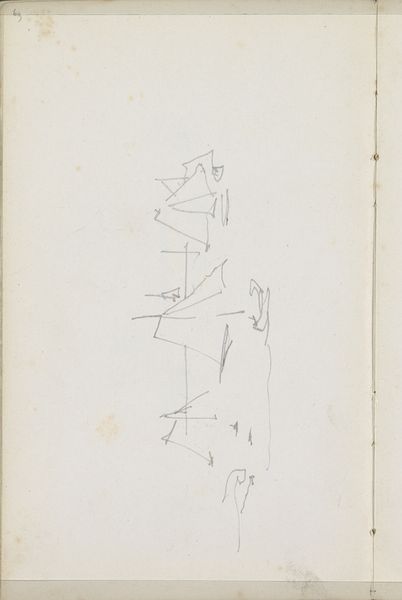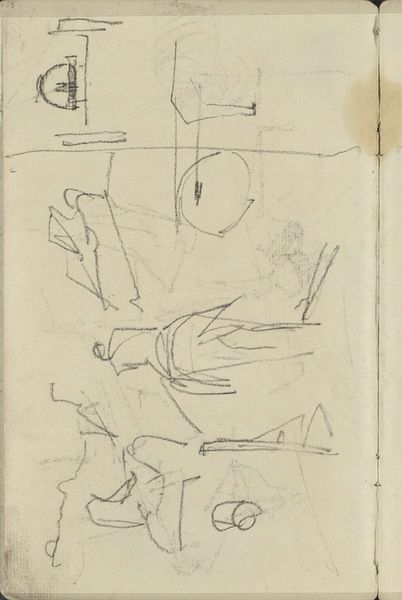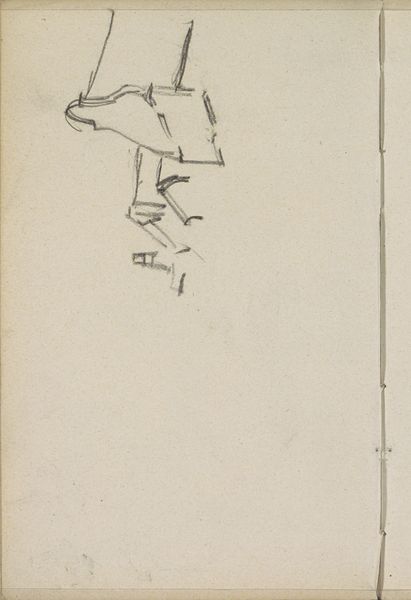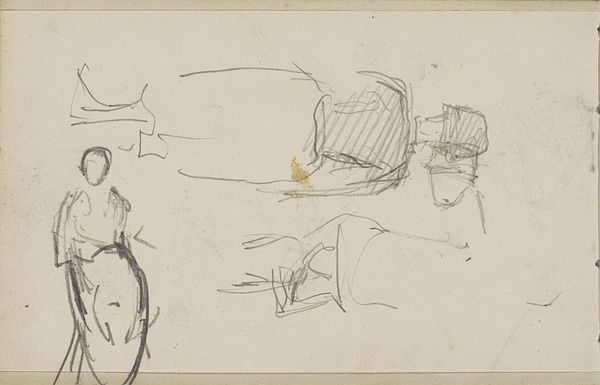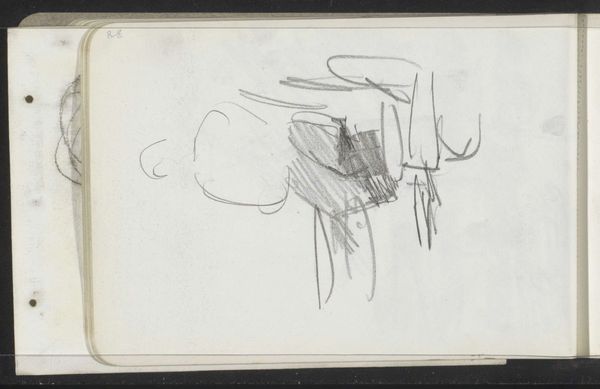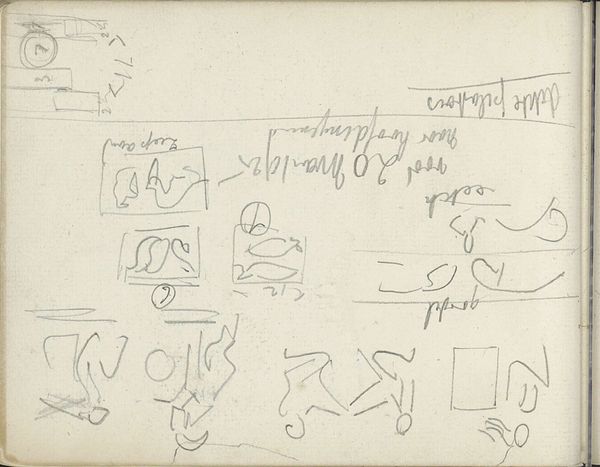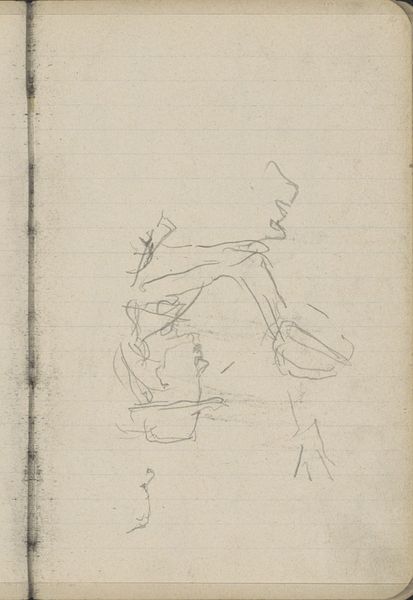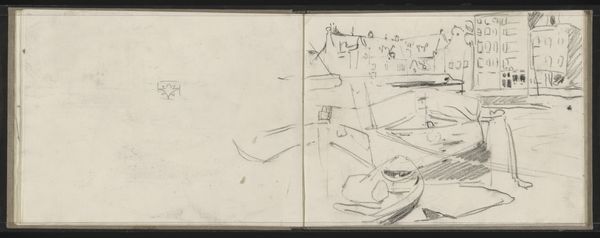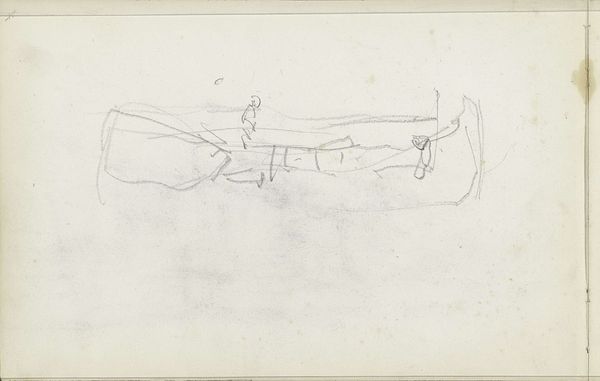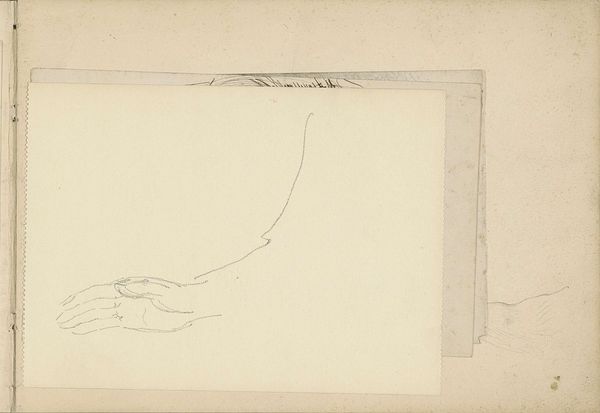
Copyright: Rijks Museum: Open Domain
Curator: Here in the Rijksmuseum, we're looking at an "Ornamentontwerp, mogelijk in de vorm van een dier," or "Ornament design, possibly in the shape of an animal" by Carel Adolph Lion Cachet, dating back to around 1930. It’s a pencil and ink drawing on paper. What's your first take? Editor: It feels like a puzzle! A fragmented thought. I’m immediately drawn to the stylized animal head. It’s as if a heraldic beast is emerging from a very practical, almost architectural, sketch. Curator: Exactly. Cachet was deeply involved in applied arts, and his background in decorative design really shows here. He’s using traditional drawing materials – pencil and ink – to explore new possibilities for ornament, questioning what it meant to unify fine art and applied work. Look at those measurements scribbled all over the page; we can observe his technical exploration, the practical dimensions necessary for its manufacture. Editor: The geometric shapes behind the creature add to the symbolism. The rigid forms versus the fluid animal design suggest a tension between control and nature, the domestic and the wild. It's a powerful dichotomy. I am curious to what context this symbolism relates in light of Art Deco, and what was its appeal for audiences at the time? Curator: That's interesting! While it has qualities associated with the organic motifs from Art Nouveau, this dates from later and seems simpler, with a clearer focus on streamlined forms. It mirrors an evolving aesthetic in consumer goods during that time; designs are made for industrial production. It appears Lion Cachet explored integrating organic motifs for designs in furniture or textiles or other industrial items. It could also demonstrate some early methods for animal emblem generation in design or marketing? Editor: Ah, the blend of craft and mass production, striving to imbue industrial objects with symbolic value! Knowing this gives even those scribbled numbers a sort of hidden meaning, each a signifier for realizing it's manufactured form! It allows me to explore even the artistic implications behind standardization in design. Curator: I agree, it's a surprisingly compelling piece that connects the handmade with machine production and material culture in unexpected ways. It offers us a way into Cachet's design methodology, if anything. Editor: And it lets us ponder the eternal dance between wild inspiration and calculated creation! Thank you.
Comments
No comments
Be the first to comment and join the conversation on the ultimate creative platform.
